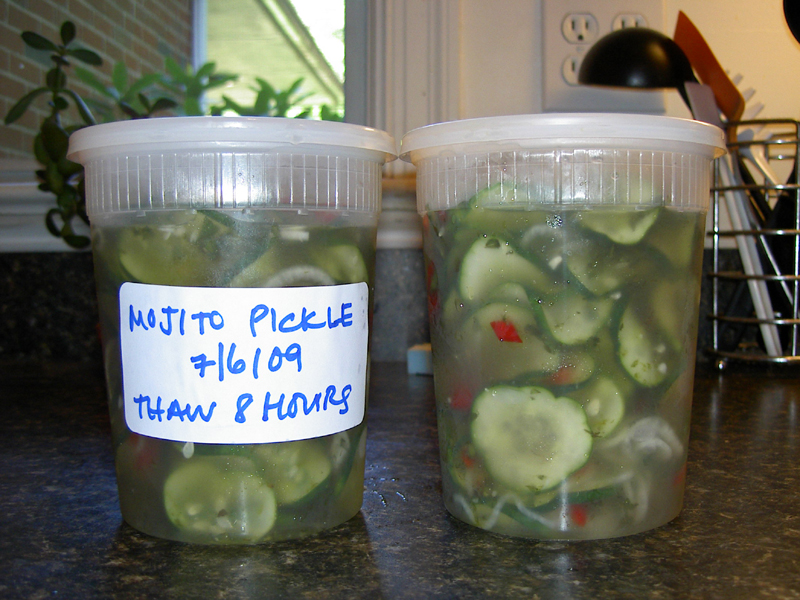One of my favorite types of meals is the one-bowl meal. Dal and rice, curry and rice, chili over baked potato: anything that can be served up as a nice hearty meal in a single bowl will do me just fine. One of our favorites is the Moroccan-style stew from Simply In Season; while we started off using ground turkey, over the past couple of years it’s become one of the ways I use our annual venison allotment. Yes, I said venison. I know that when I was growing up I would have gladly gnawed off my own arm before eating deer, and certainly never forgiven someone I knew who actually shot a deer themselves and foisted it upon me. What can I say: things change. More than just me eating meat again, what’s changed is that venison is lean and free, thanks to the generosity of my partner’s boss who is always looking for ways to share the bounty (and not piss off his own partner by filling up their freezer with too much deer). In the past we’ve taken maybe ten pounds of ground venison at most over the course of a season and used it in the Christmas pies and a few batches of this stew. This year I said I could take about forty pounds, since I now have a chest freezer. Expecting a bunch of vacuum-packed lumps of meat, I was fairly disconcerted to be presented with a sack of ground meat held closed with a binder clip. I dutifully packed it away into quart-sized freezer bags, and then did it again the next day with the second sack. I tried to just be thankful I wasn’t the one to have to carry it on the metro and move on. Thank goodness for latex gloves!
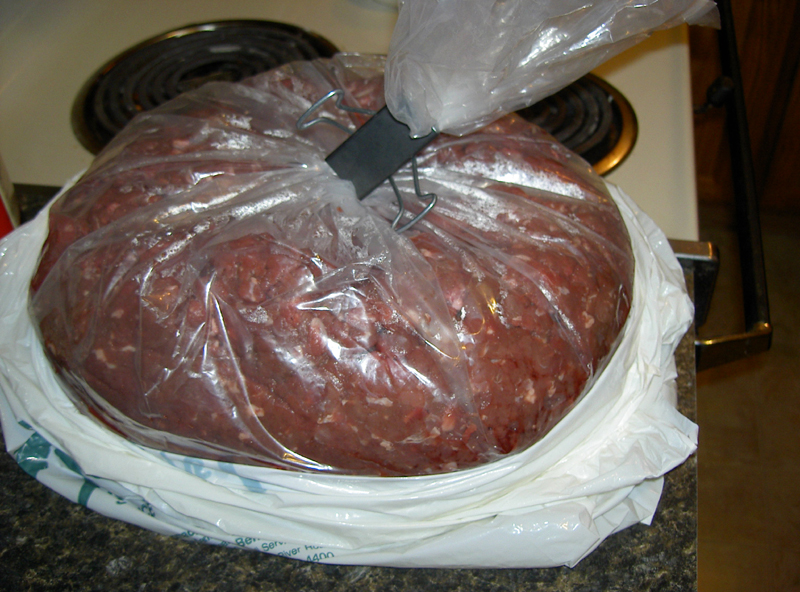
The venison as it arrived at our house.
Since all of our greens went bad last week, I was a bit stymied for the Week 5 meal for the Dark Days Challenge, and decided to fall back on this stew, which is something of a staple here. I figure you don’t get much more local than deer shot by someone you know and transported in a sack via light rail, right? I also had turnips and stewed tomatoes from our CSA and was willing to have a sweet potato (Japanese purple variety) stand in for a potato. Everything else is not local (although the canned beans are Eden brand which is local to Michigan which is where I used to live, so that kind of sort of qualifies). And, I already had the ingredients in my house, and using up things already in the pantry is fairly sustainable. (I know, it’s a stretch: I will do better next week.)
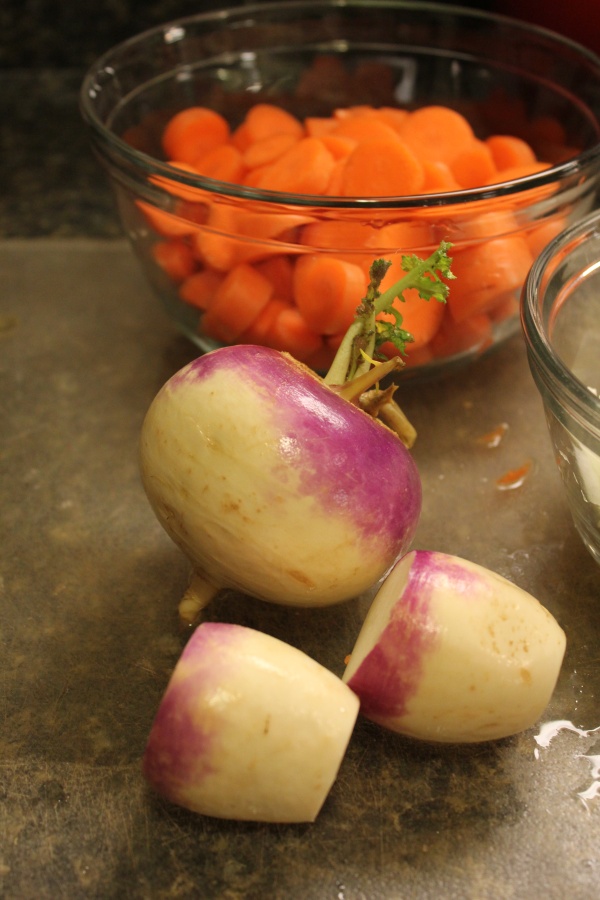
Vegetables for the stew, sweet potato not included.
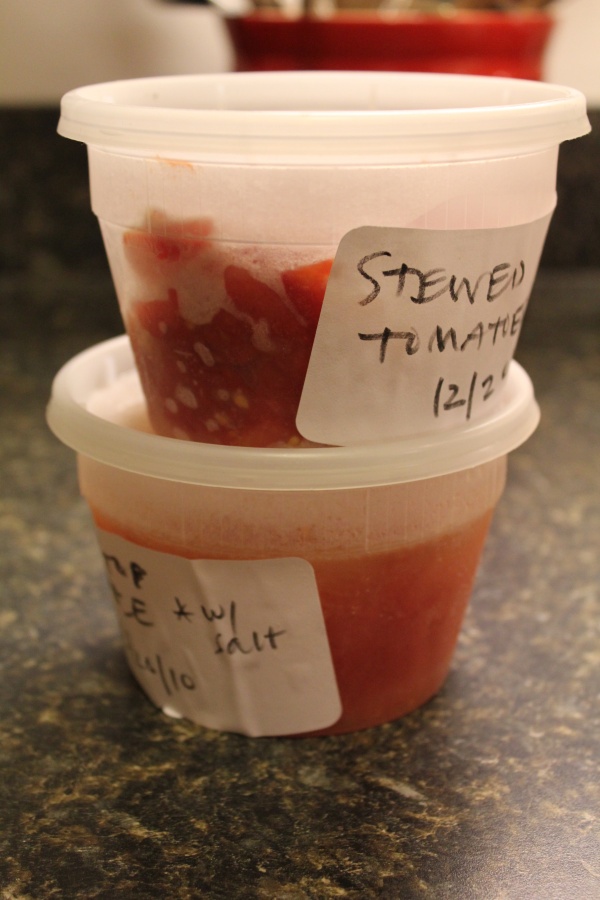
The last of the summer’s tomatoes from the freezer.
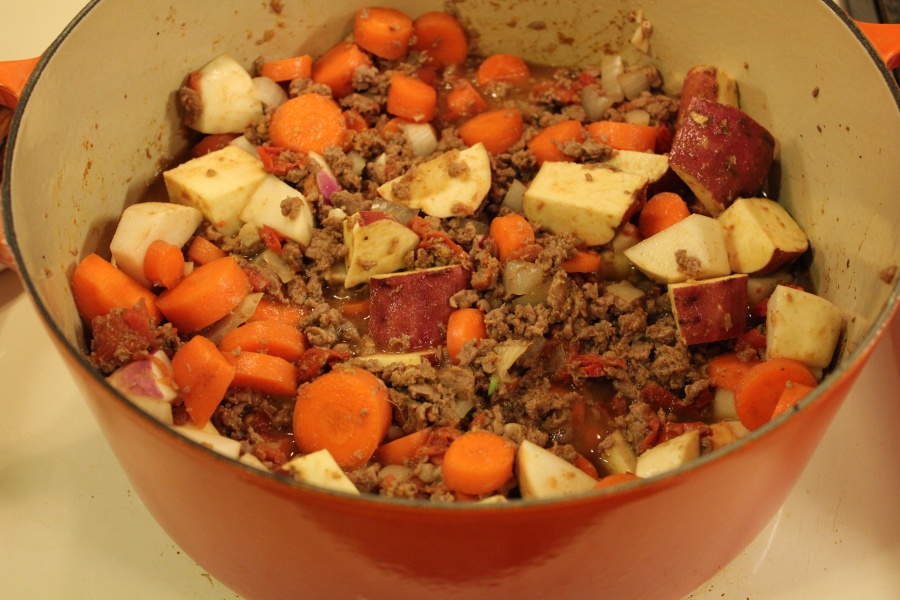
The stew stewing, minus chickpeas and raisins.
The stew was really good, and the sweet potato added a funny (in a good way) flavor. It was a sweet juicy little surprise lurking in the savory stew; I think the potato is better in terms of the integrity of the overall dish, but the sweet potato was yummy and I’ll gladly use one again if that’s all I have on hand. I look forward to the best part of one dish meals (since we do have a dishwasher): having it for lunch again the next day!

Week 5: venison stew dinner.

